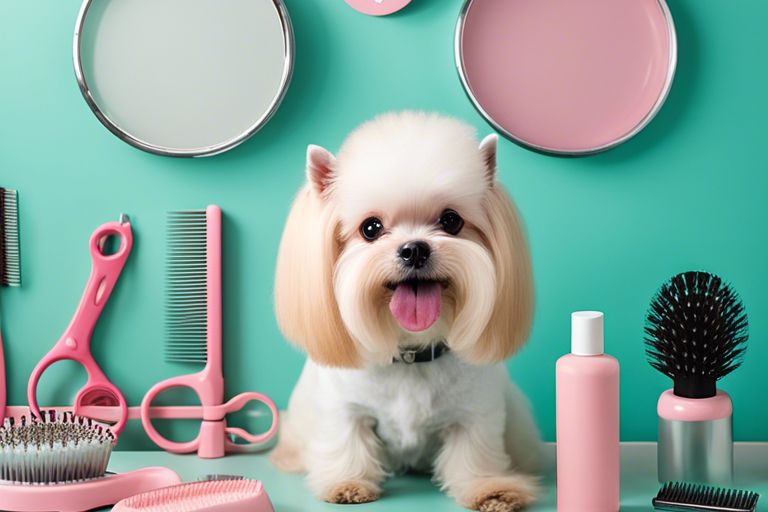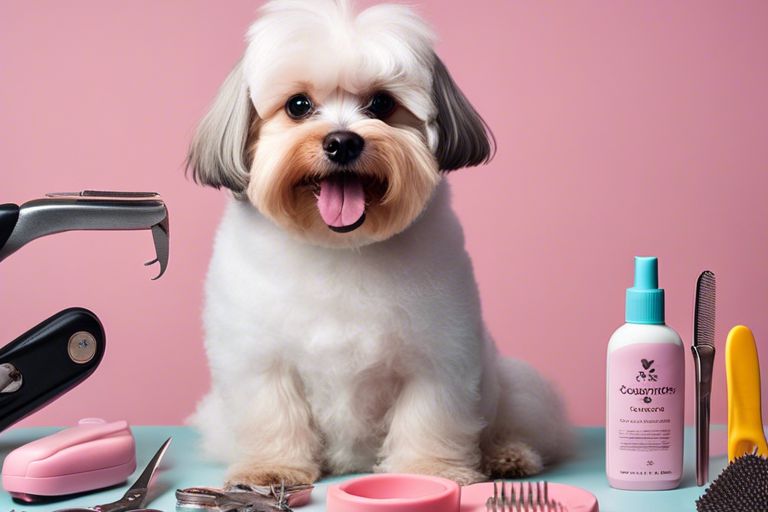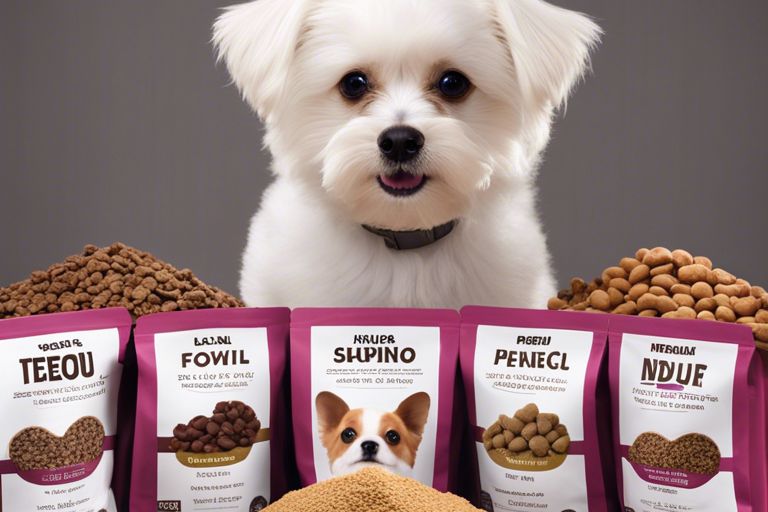Grooming can be an intimidating experience for a small dog, but proper introduction and training can make the process much easier for both you and your furry friend. As a professional groomer, I have worked with countless small dogs and have found some effective techniques for introducing them to grooming. It is essential to take slow and gradual steps to acclimate your dog to the grooming process, as rushing into it can cause anxiety and fear. Positive reinforcement and rewards play a vital role in making grooming a positive experience, so be sure to have plenty of treats on hand. In this blog post, I will share the best ways to introduce your small dog to grooming and set them up for a lifetime of happy grooming experiences.
Key Takeaways:
- Start slow: Introducing a small dog to grooming should be done gradually, allowing them to get used to the process at their own pace.
- Use positive reinforcement: Rewarding your dog with treats and praise during grooming sessions can help them associate the experience with positive feelings.
- Be patient and gentle: Small dogs may be more sensitive to grooming, so it’s important to be patient and gentle while handling them during grooming sessions.
Understanding Your Small Dog’s Grooming Needs
Even the smallest dog breeds have specific grooming needs that are important to understand in order to keep your furry friend healthy and happy. Regular grooming is not only essential for maintaining your dog’s physical appearance, but also for their overall well-being. It is crucial to introduce your small dog to grooming at an early age, starting with basic activities such as brushing and nail trimming. If your dog already has a negative association with grooming, it may take some patience and training to help them overcome their fears. You can find more information on how to help your dog enjoy grooming here.
Breed-Specific Grooming Requirements
When it comes to grooming your small dog, it is important to consider their breed-specific requirements. Certain breeds may have coat types that require special care, such as regular trimming or de-matting. For example, long-haired breeds like Shih Tzus and Maltese require frequent brushing to prevent tangles and mats, while short-haired breeds like Chihuahuas may need less frequent grooming but still require regular nail trimming and ear cleaning. Understanding the specific needs of your dog’s breed will help you provide the best possible grooming care.
Identifying Your Dog’s Comfort Levels
As a pet owner, it is essential to be attuned to your small dog’s comfort levels during grooming. Watch for signs of discomfort or anxiety, such as trembling, whining, or trying to escape. These could indicate that your dog is feeling stressed or fearful. It’s important to take a gentle and patient approach, gradually introducing your dog to the grooming process and ensuring that they feel safe and secure. Always be mindful of your dog’s body language and adjust your grooming routine according to their comfort levels.
Creating a Positive Grooming Environment
Clearly, creating a positive grooming environment is crucial when introducing a small dog to grooming. You want your dog to feel safe, comfortable, and relaxed during the grooming process. This will help build a positive association with grooming and make the experience more enjoyable for both you and your furry friend.
Choosing the Right Tools and Products
When it comes to grooming a small dog, it’s important to choose the right tools and products. Look for grooming tools specifically designed for small breeds, such as a soft-bristle brush, a small pair of grooming scissors, and a gentle shampoo formulated for dogs. Additionally, avoid using human grooming products on your dog as they can be harmful to their skin and coat. Always opt for high-quality, dog-specific grooming products to ensure the safety and well-being of your small dog during the grooming process.
Setting Up a Grooming Area at Home
Setting up a designated grooming area at home can help create a positive grooming experience for your small dog. Choose a quiet, well-lit area with enough space to comfortably groom your dog. Use a non-slip mat or towel to provide stability for your dog during grooming. Additionally, keep all grooming supplies within reach to avoid leaving your dog unattended. By setting up a grooming area at home, you can create a familiar and safe environment for your dog, making the grooming process less stressful for them.
Grooming Step by Step
Now that you have introduced your small dog to grooming and have gained their trust, it’s time to start the grooming process. Grooming your small dog is an essential part of their care routine, and it’s important to do it correctly to keep them healthy and happy.
Introducing Your Dog to Grooming Equipment
When introducing your small dog to grooming equipment, it’s crucial to take it slow and make the experience as positive as possible. Start by letting your dog sniff and investigate each tool before using it. Use treats and praise to associate the grooming tools with positive experiences. Remember, never force your dog to interact with the tools if they seem scared or uncomfortable.
Basic Grooming Techniques for Small Dogs
When it comes to basic grooming techniques for small dogs, it’s important to be gentle and patient. Use a soft-bristled brush to gently comb through your dog’s fur, being extra cautious around sensitive areas like their ears and tail. It’s crucial to be gentle but thorough to avoid causing any discomfort or injury. Regularly trimming your dog’s nails is also essential to prevent overgrowth and potential pain or mobility issues.
I hope this helps! Let me know if you want me to expand on some part of the text.
Professional Grooming vs. Home Grooming
For small dogs, grooming is an essential part of their care routine. When it comes to grooming your small dog, you have the option of taking them to a professional groomer or grooming them at home. Both options have their pros and cons, and it’s important to weigh them carefully to determine the best choice for your furry friend.
When to Seek Professional Grooming Services
If you have a long-haired or double-coated small dog breed, or if your dog has a particularly difficult coat to manage, professional grooming may be the best option for you. Professional groomers have the expertise and tools to handle difficult coats, and they can provide services such as de-matting, stripping, or hand-stripping that can be challenging to do at home. Additionally, professional groomers are trained to handle dogs that may be anxious or uncooperative during grooming, ensuring a safe and stress-free experience for your dog.
Maintaining Grooming at Home
Maintaining your small dog’s grooming at home can be a convenient and cost-effective option. Regular brushing, bathing, nail trimming, and ear cleaning are essential aspects of at-home grooming that can help keep your dog’s coat healthy and free of tangles or mats. With proper training and the right grooming tools, you can effectively groom your small dog at home. However, it’s important to note that some grooming tasks, such as haircuts or specialized coat treatments, may require professional expertise. Additionally, grooming at home requires patience and a gentle touch, as mishandling grooming tools or techniques can cause stress or injury to your dog.
By weighing the factors involved in professional grooming versus at-home grooming, you can determine the best approach for keeping your small dog looking and feeling their best. Remember, the well-being and comfort of your pet should always be the top priority when it comes to grooming. Whether you choose professional services or opt for at-home grooming, ensure that the experience is positive and safe for your furry companion.

Conclusion
Ultimately, the best ways to introduce a small dog to grooming involve patience, positive reinforcement, and desensitization. It is important to gradually introduce your dog to grooming tools and procedures, starting with short, positive experiences before gradually increasing the time and intensity of the grooming sessions. By using treats and praise, you can help create positive associations with the grooming process. Additionally, desensitizing your dog to the sights and sounds of grooming tools can help reduce anxiety and fear. With time and patience, your small dog can become comfortable and even enjoy the grooming process.
FAQ
Q: What are the best ways to introduce a small dog to grooming?
A: Introducing a small dog to grooming should be done gradually and patiently. Start by getting your dog comfortable with being handled and touched all over their body. Use positive reinforcement such as treats and praise to create a positive association with grooming tools and the grooming process. Slowly introduce the grooming tools, such as brushes and clippers, allowing your dog to sniff and become familiar with them before using them. It’s important to take your time and not force your dog into grooming, as this can create fear and anxiety. Consistency and patience are key in successfully introducing a small dog to grooming.
Q: How often should I groom my small dog?
A: The frequency of grooming for a small dog can vary depending on their specific coat type and grooming needs. Generally, small dogs with longer or thicker coats will require more frequent grooming, such as brushing and bathing, to prevent matting and tangles. On the other hand, short-haired small dogs may require less frequent grooming. It’s important to establish a regular grooming routine based on your dog’s individual needs and coat type. Consult with a professional groomer or veterinarian to determine the ideal grooming schedule for your small dog.
Q: What are some tips for grooming a small dog at home?
A: When grooming a small dog at home, it’s important to have the right tools and a calm, quiet environment. Use high-quality grooming tools specifically designed for small dogs, such as brushes, combs, and nail clippers. Brush your dog’s coat regularly to prevent mats and tangles, and trim their nails as needed to avoid overgrowth. When bathing your small dog, use a gentle dog shampoo and thoroughly dry their coat to prevent skin issues. Be gentle and patient while grooming, and always reward your dog with praise and treats for good behavior. If you’re unsure about how to groom your small dog at home, consider seeking guidance from a professional groomer or attending a dog grooming class.


